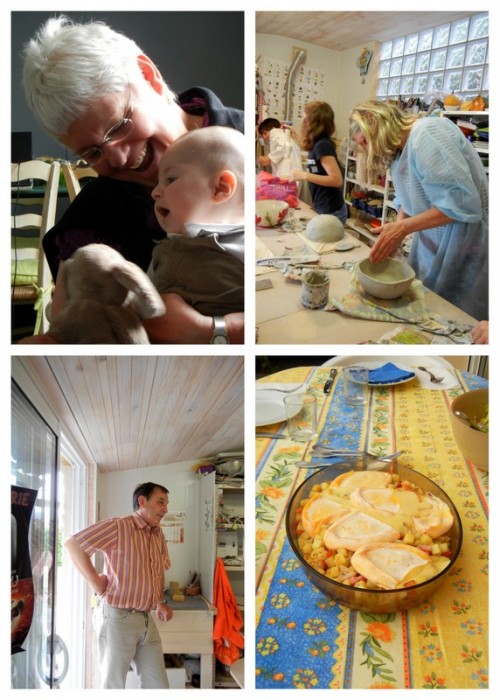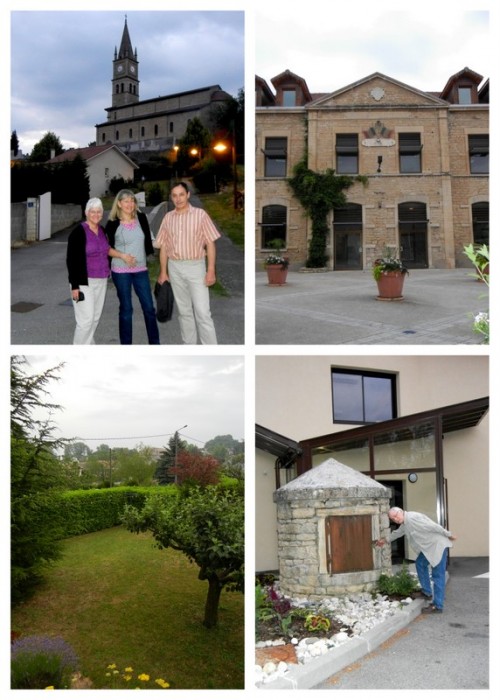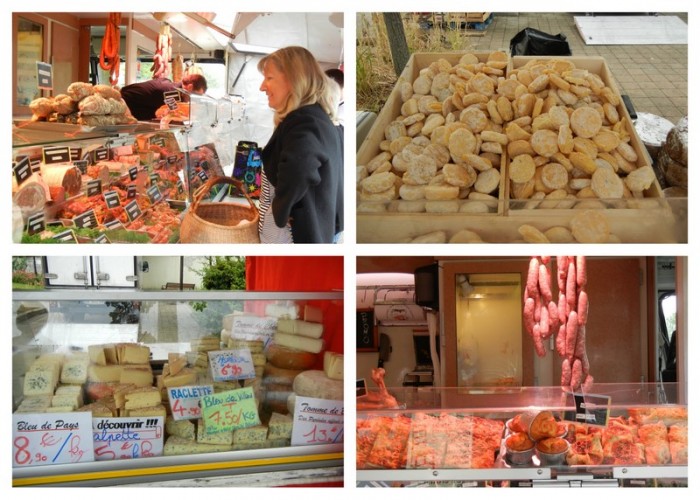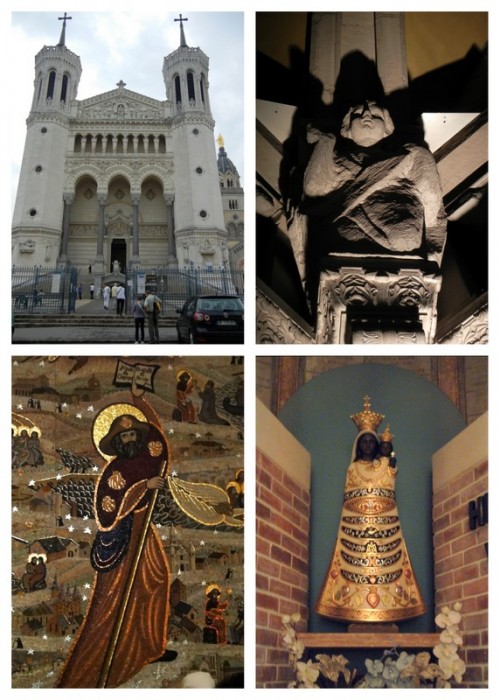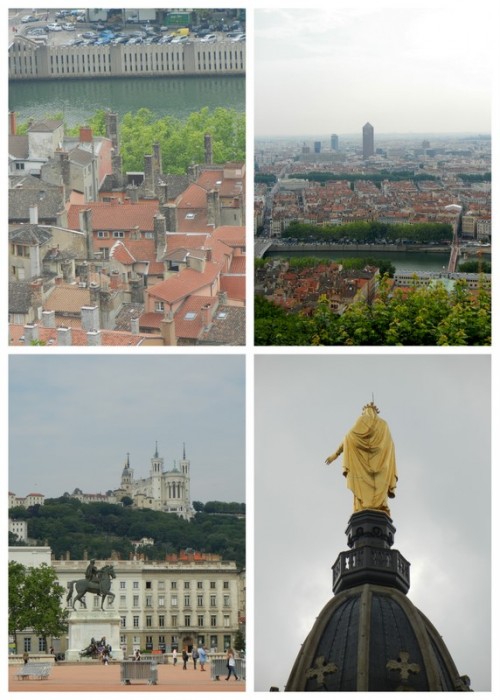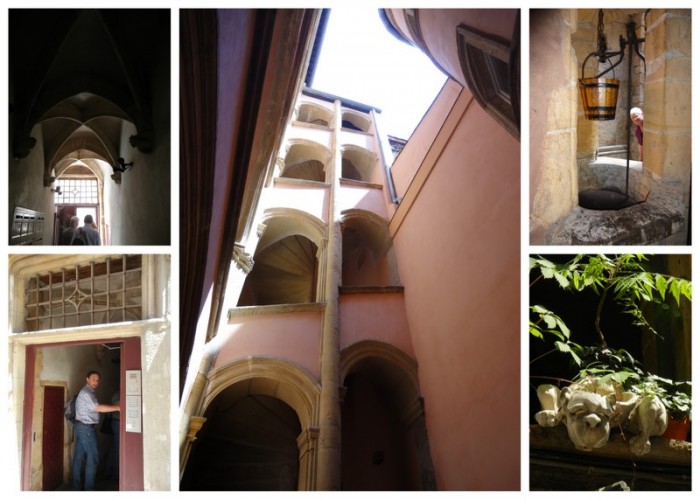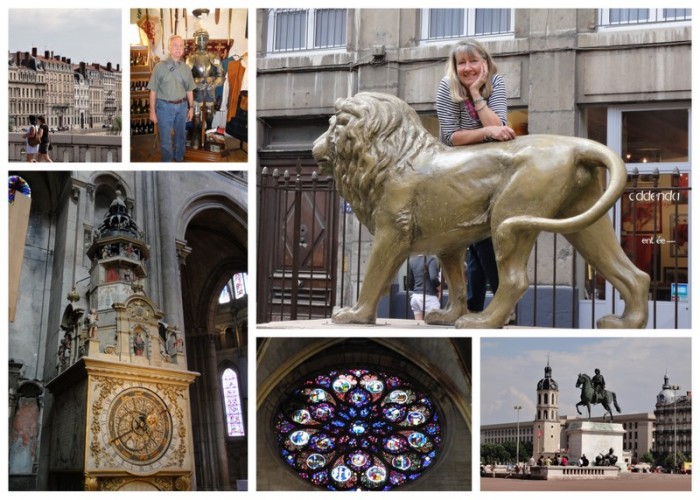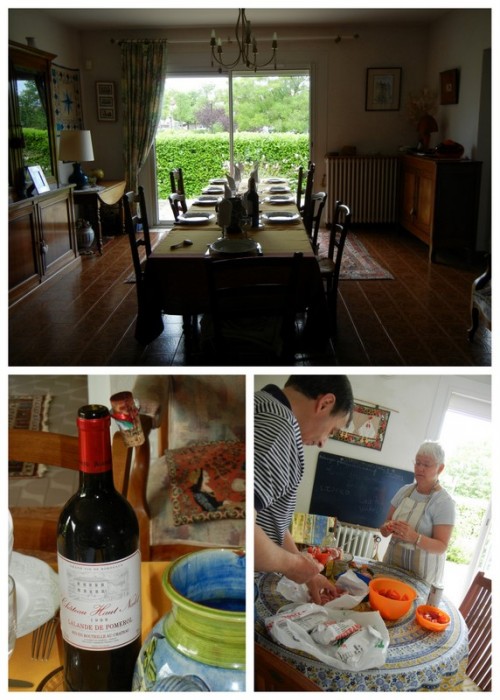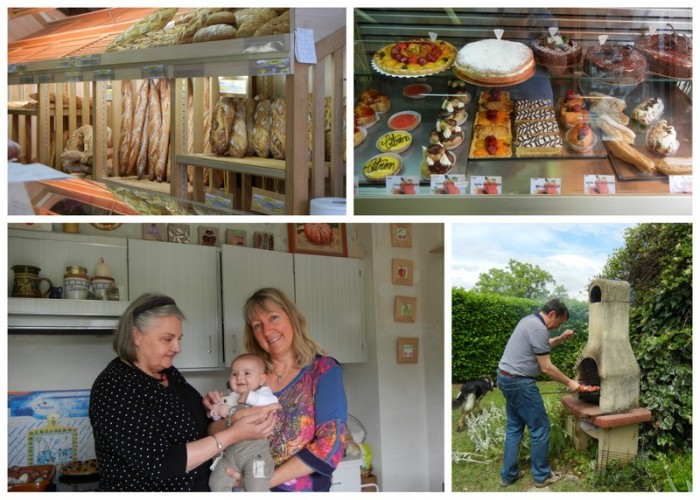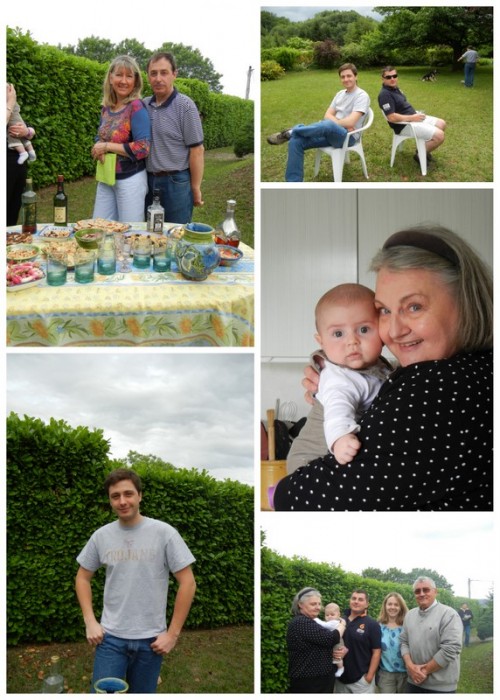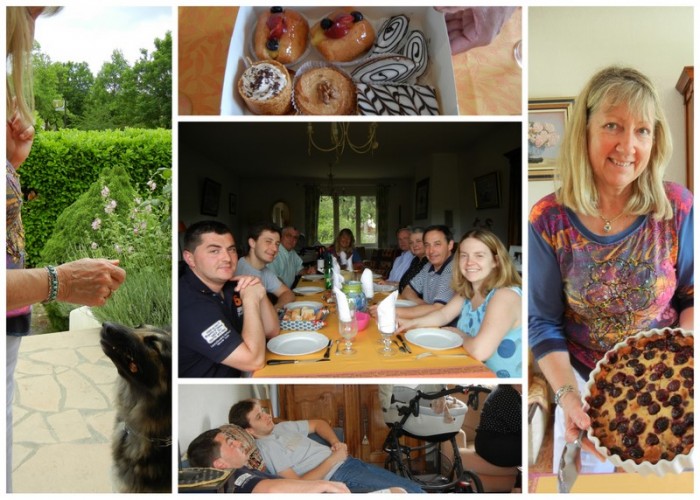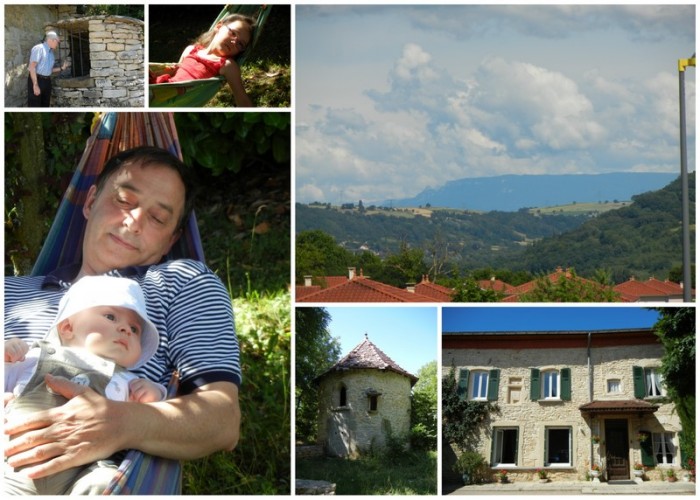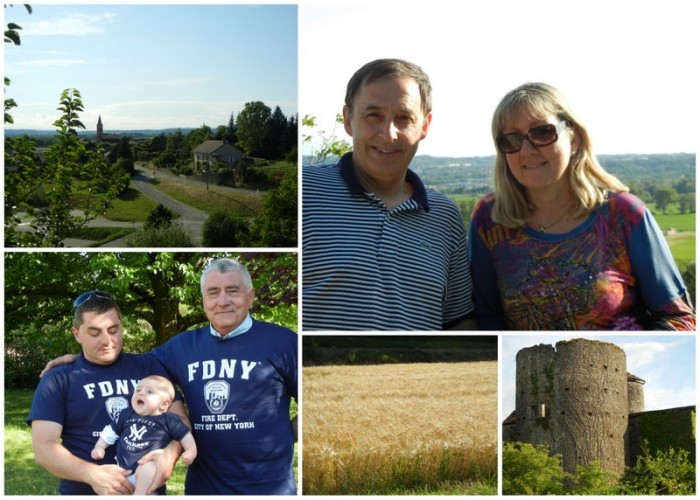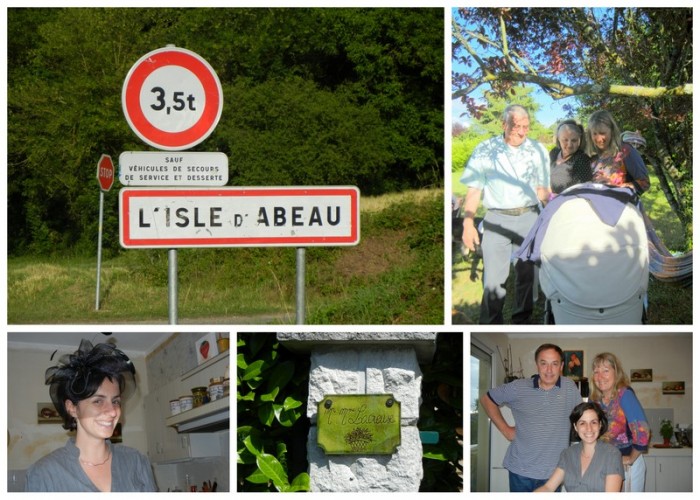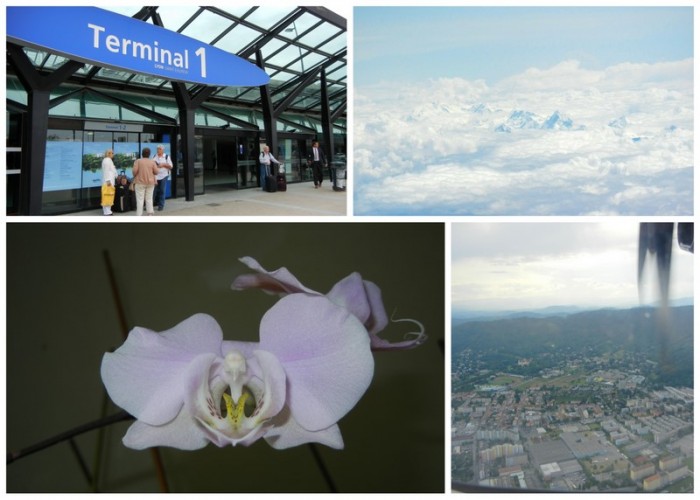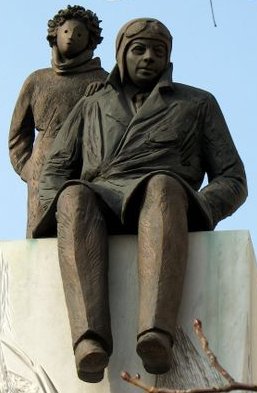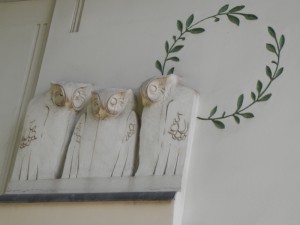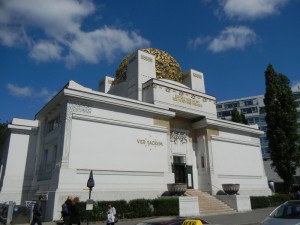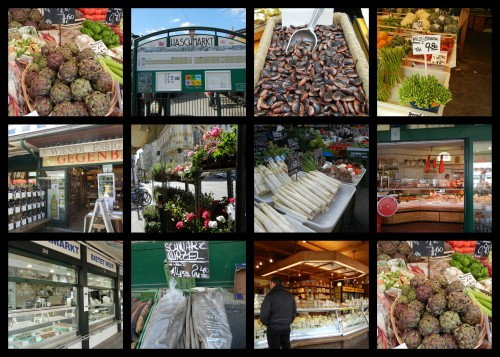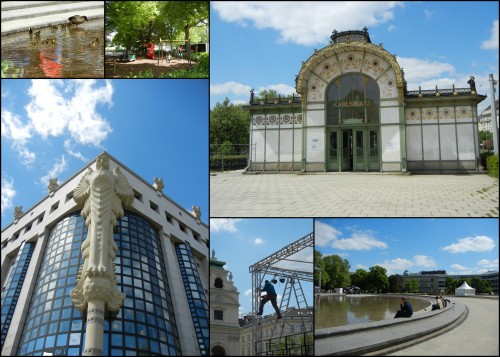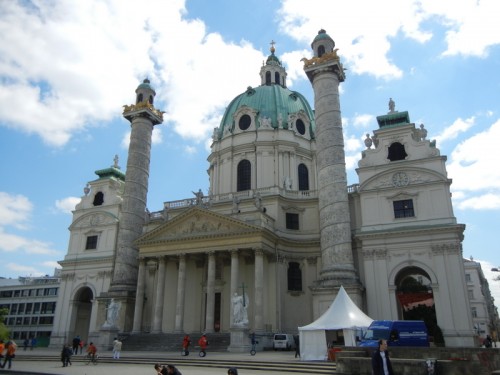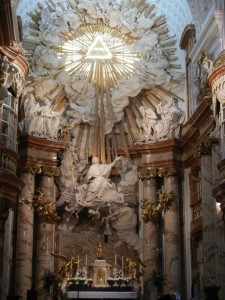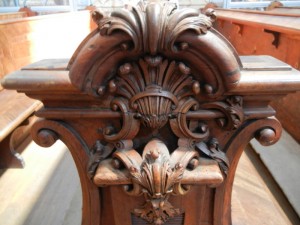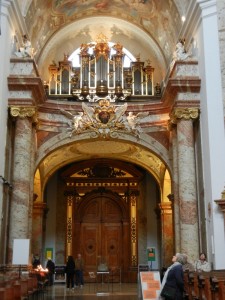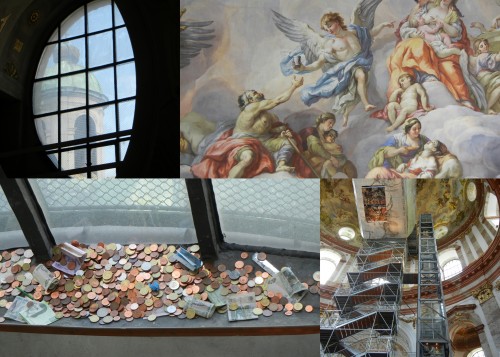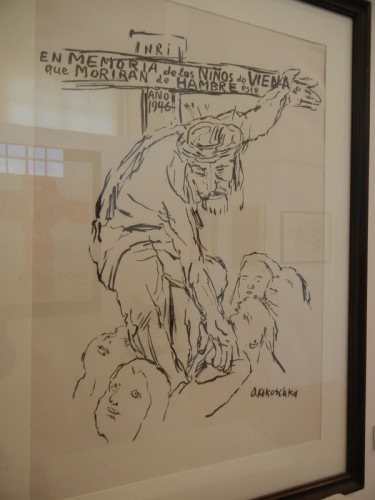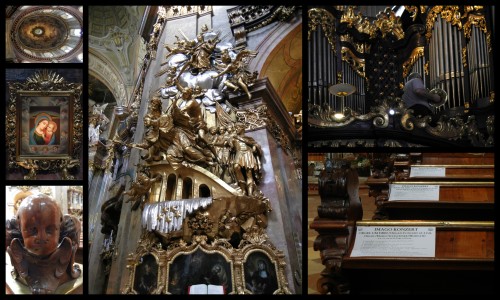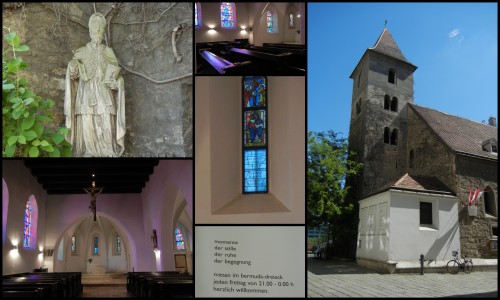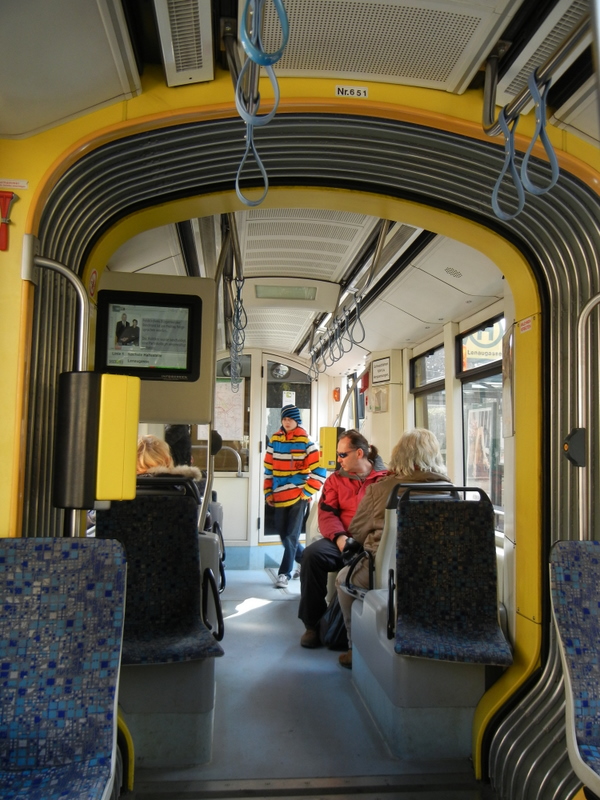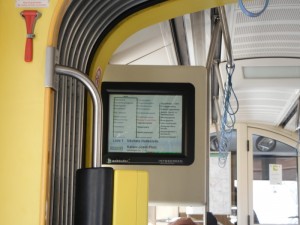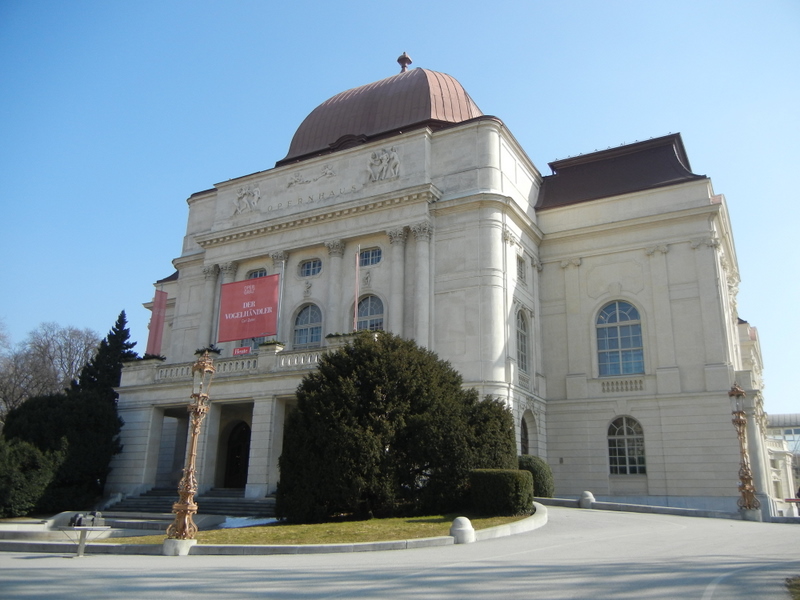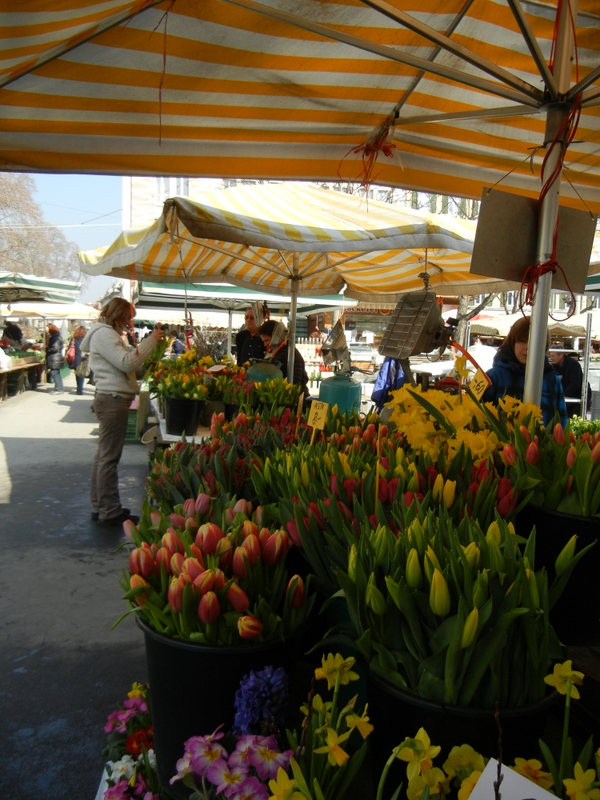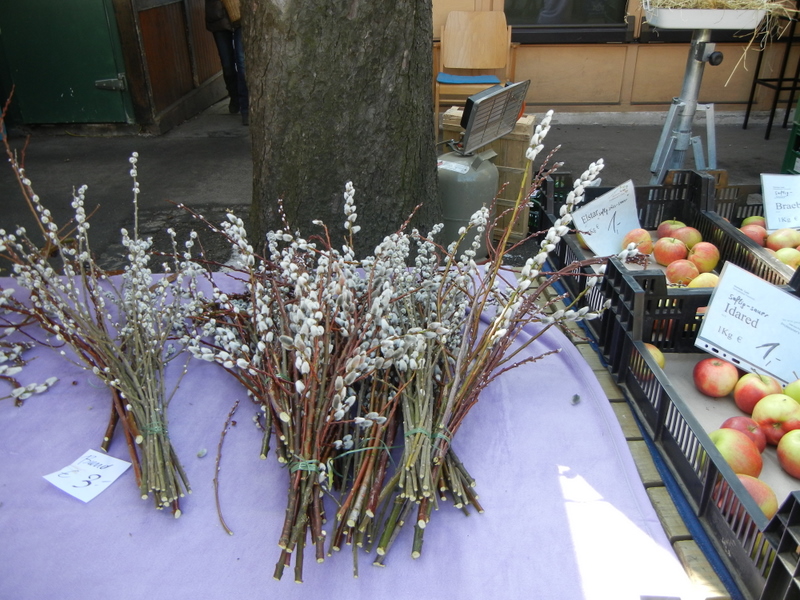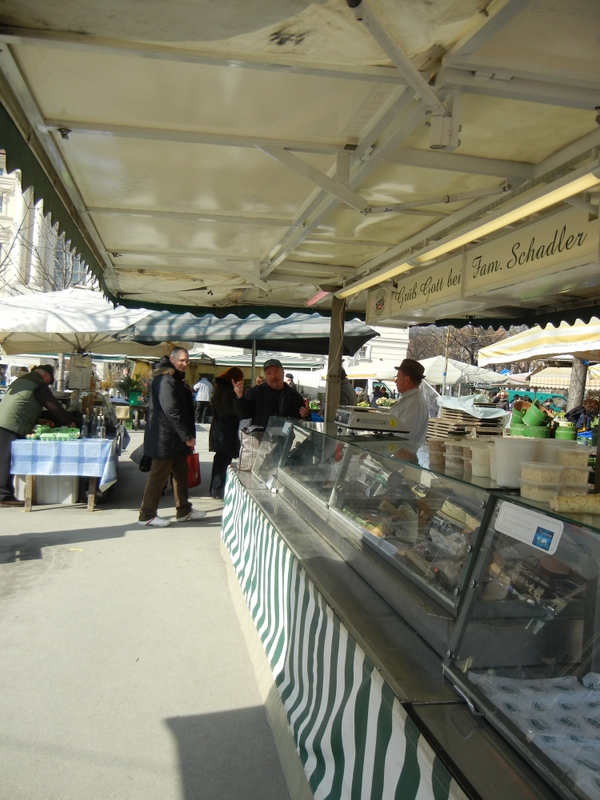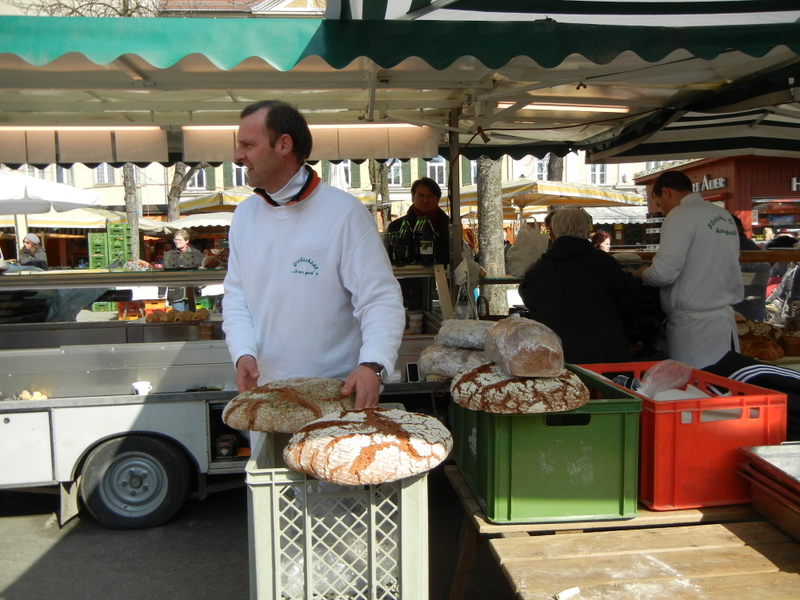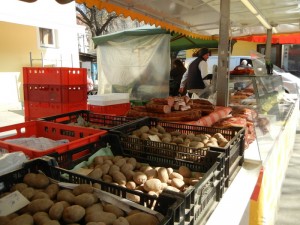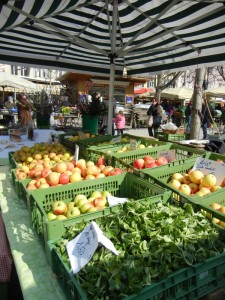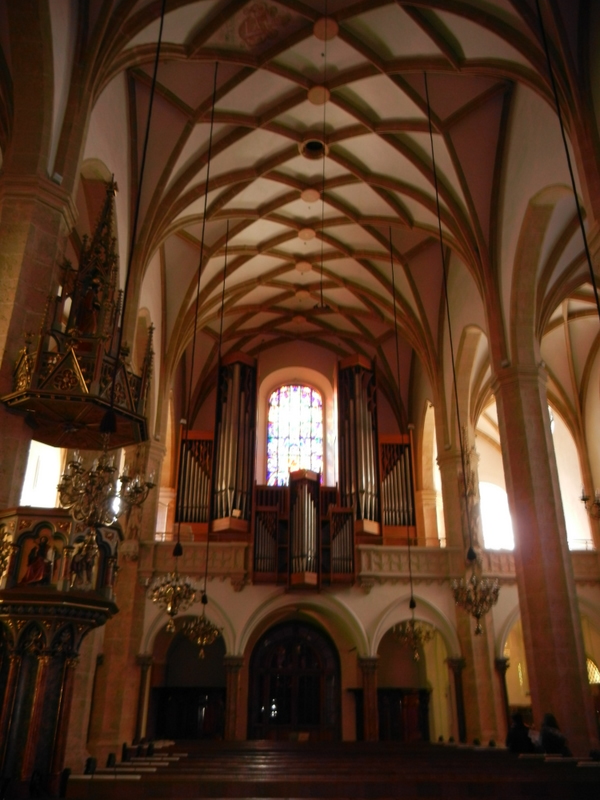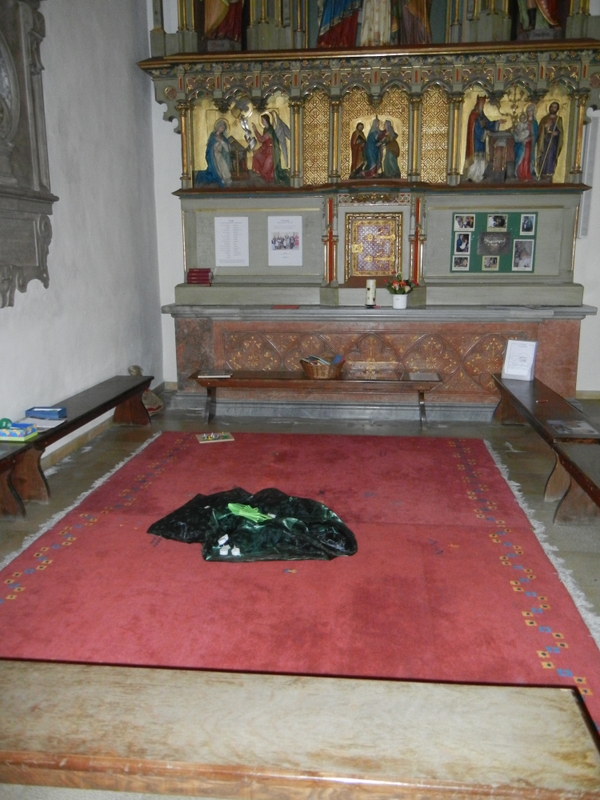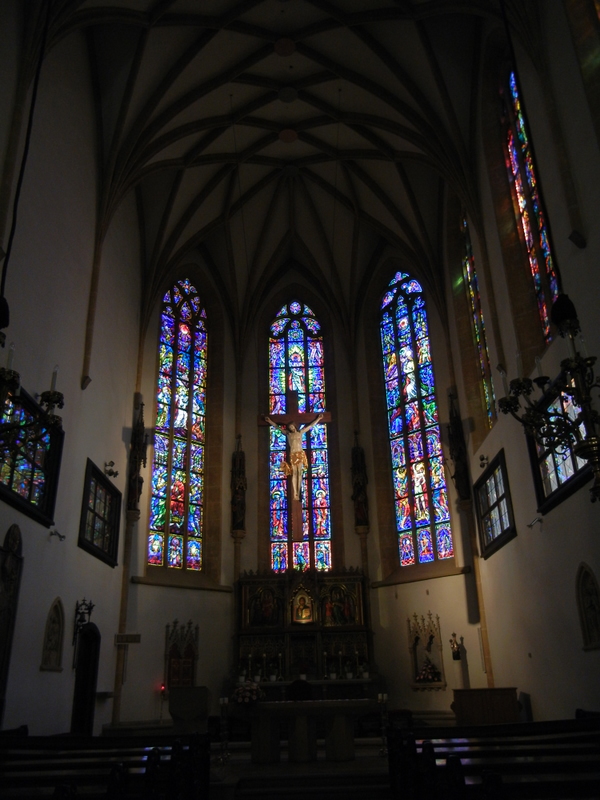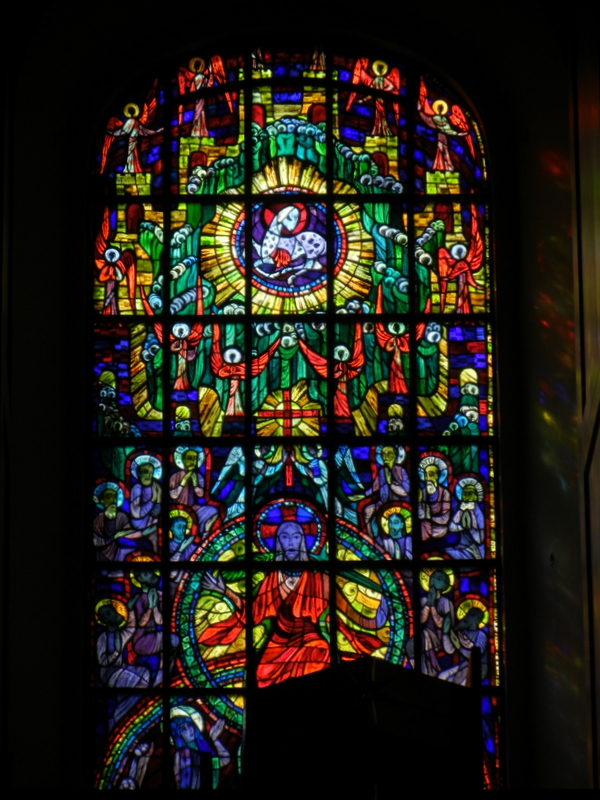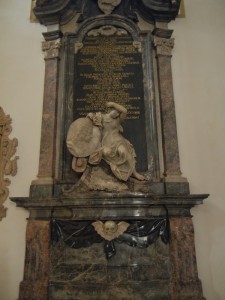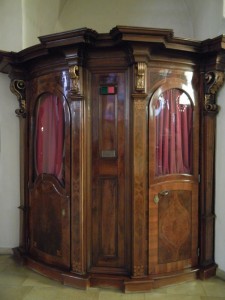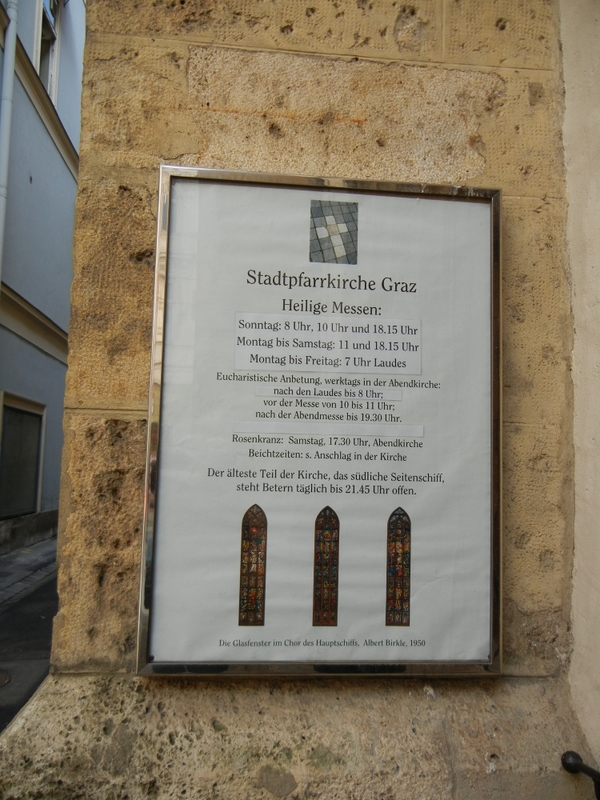As we rode on the CVG train to Lyon and our friends, the fields of wheat, and rapeseed whizzed by, that is, when we could see them. With high speed trains, apparently we trade scenery for rapid transit, as much of the journey was in a straight and narrow trench with only occasional glimpses of the French countryside.
Lyon, in the Rhône-Alpes region, is another old city, and is known for its role in silk manufacturing. It seems all great cities have rivers that run through them, and Lyon is no exception, except there are TWO rivers (Rhône and Saône) which converge just south of Lyon and then flow toward the Mediterranean 230 Km away. We drove on bridges over both in a little car tour of Lyon before we headed toward the town where Chantal and Andre live, about 28 Km south-east.
Enroute we paid a visit to the home of their oldest daughter for introduction to 4 month-old ‘le petit Victor’, the first grandchild. Finally, we arrived in at their home in L’Isle d’Abeau, adjacent to a large plaza and surrounded by beautiful gardens. Chantal was in the backyard, in her atelier, guiding students who come for pottery lessons. After receiving, for so many years, photos of the house, the gardens, and the workshop (which Andre built), it was wonderful to see Chantal and her husband in their surroundings and in action. Bill enjoyed chatting with the 8 and 9 year-old students, quizzing them about which singers they liked (Lady Gaga – oui!; Justin Bieber – non!) and testing if they could understand any English (they could, but were shy about using it!).
Paris may have the renowned tourist attractions but Lyon (and environs) gets our vote for the food, and that began with our first delicious meal with our hosts at, oh, about 9 PM. Chantal whipped up a Tartiflette, a dish from the Savoie region. It is made with potatoes, onions, reblochon cheese, cream, and lardons. So yummy, but pass the med for cholesterol name! How do the French manage all that fat content? By walking in proportion to what they eat! After dinner, we took an hour walk up to the church and around the town! Fantastique!
The next morning was market day, which meant simply stepping out the front door to the stands set up in that big plaza in front of their home: more cheese, interesting meats, and fresh fruits and veggies.
Then it was off to Lyon, via the metro system leading first to the funicular up the hill of the Basilique de Notre-Dame de Fouvière (a basilica with sanctuaries on two levels and gorgeous mosaics!) and eventually down to old-town Lyon.
On a street lined with restaurants (Chantal visited at least 3 before deciding which one would do) we ate salad Lyonnaise and les quenelles avec sauce aux écrevisses (crawfish), quite possibly the best food of our lives. (the foie gras in Paris pales in comparison and I have officially eaten food I never thought I would!)
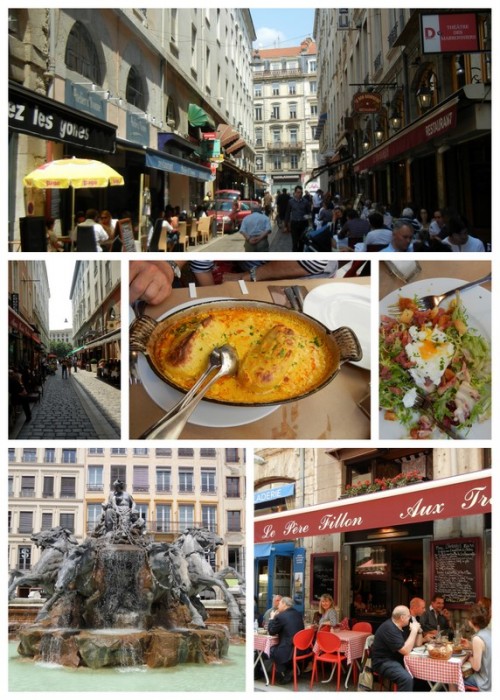
la rue des restaurants, Le pere Fillon aux les trois cochons (pigs), les quenelles avec sauce aux ecrevisses, salad lyonnaise, Place des Terreaux, fountain of the 4 rivers of France
Old Lyon is largely Renaissance with a very interesting feature: traboules, passageways between buildings, and sometimes between streets. You will find passageways and courtyards in Graz, but rarely do they rise and criss-cross several stories off the ground. Although most of the traboules lead to private residences, many city-dwellers have opted to keep the historic traboules accessible to the public. One only has to ring a buzzer and push on the heavy wooden door to stroll through the tunnel and arrive in a light-bathed courtyard offering a photographer’s dream of wells, stairs and gargoyles.
We finished our day with a visit to the Lyon Cathedral with its astronomical clock, and a walk to the river.
The next morning was for preparing for dinner with le petit Victor and his family, plus the other grandparents (from close to Grenoble) who arrived at 11:30 AM. On the menu: l’oignon tarte, homemade foie gras, little breads with various tapenades, sliced terrines, fresh baby radishes, nuts, and several types of liqueurs, including orange liqueur à Chantal. This was a living tableau of Mastering the Art of French Cooking, and those were just the aperitifs!
Dinner was lamb (including the kidneys!) and vegetables en brochette, tabbouleh made with couscous, bread and wine. Following that, the cheese course. Et en fin, dessert. Chantal served a cherry clafouti created earlier that day, with 2 or 3 choices of ice cream, which alone seemed perfect. But we also had visited the bakery on Sunday morning (bakeries there are open on Sunday; closed on Monday) not only for artisan baguettes, but also an insane variety of dessert pastries.
We lounged a while in the backyard, entertaining the dog, and then it was time for …. a stroll! This time we walked to an old amphitheater, and by an old quarry for a view of the Alps. OK you had to squint to see them, but they were there.
The other families departed, Clementine (daughter #2) arrived for a brief visit, and when the conversation drifted to the royal wedding, the modeling began. Somehow French women just look better in their clothes, and their hats!
Still, the night was young, so we zipped out in the car for a look at the old chateau that was the reception site for Aurélie and Matthieu’s wedding, again with a gorgeous view. Between the company, the food and the scenery, we felt absolutely complete!
All too soon it was time to depart.
If I were home this would be the point at which I would pull out my worn copy of Le Petit Prince by Lyon’s famous native son, Antoine de St. Exupéry. When I continued my French studies in college, I wrote a paper about this brave and adventurous man who shared such wisdom in his novella. As Chantal dropped us off at the airport which bears his name, we both had tears in our eyes: Sadness at the parting but joy for the time we spent together. And in our hearts, delicious memories. No words needed.
“And now here is my secret, a very simple secret; it is only
with the heart that one can see rightly, what is essential is invisible to the eye.”
–Antoine de St. Exupery
Au revoir pour maintenant.

